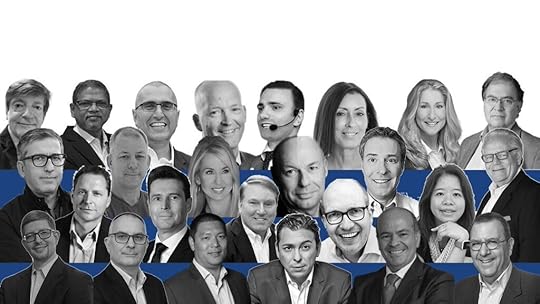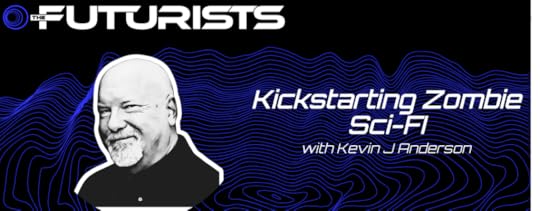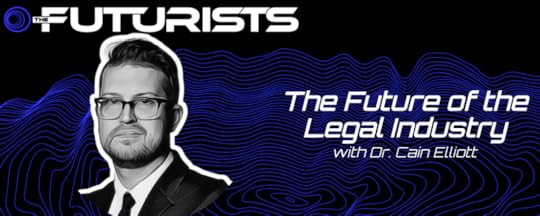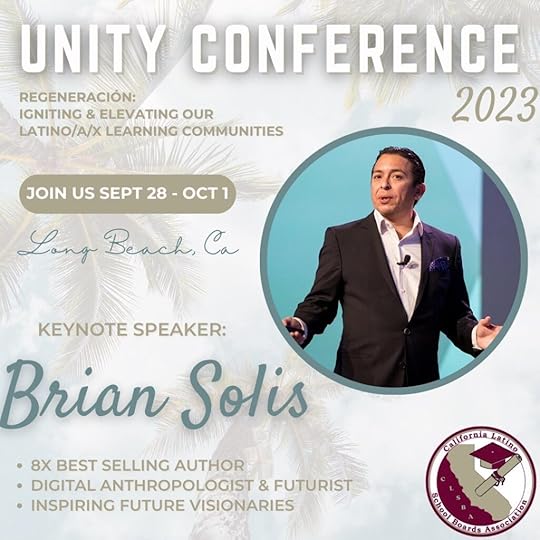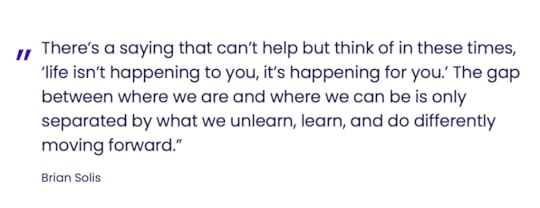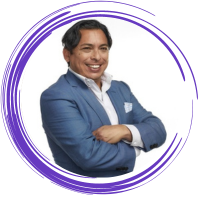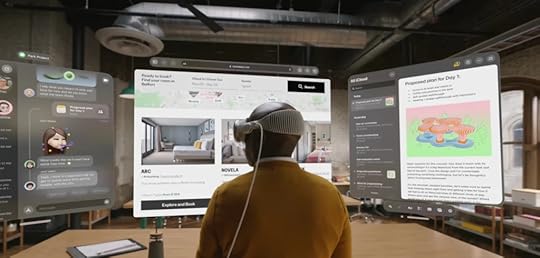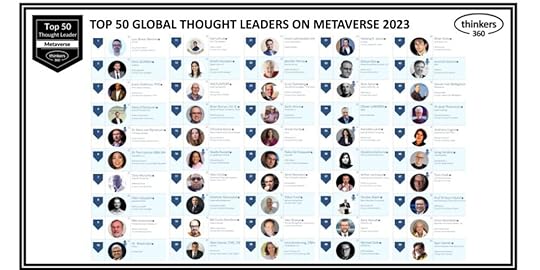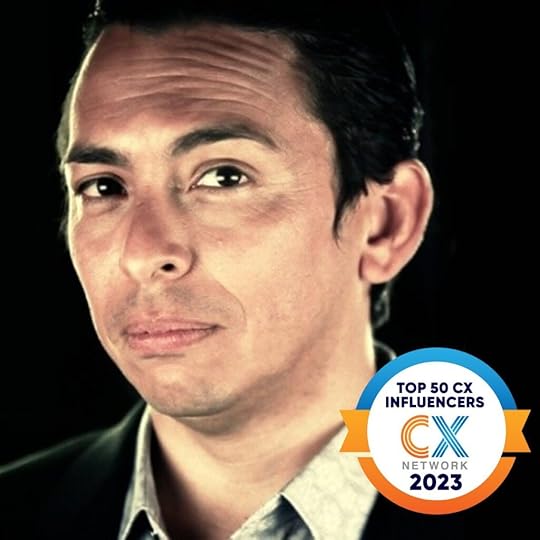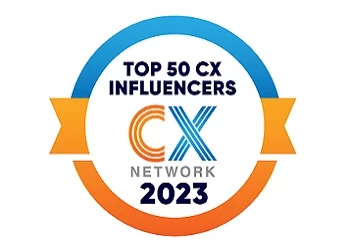Brian Solis's Blog, page 20
September 28, 2023
TechReport: The 15 Must-Follow Tech Visionaries
TechReport just named Brian Solis as one of the 15 ‘must-follow’ tech visionaries.
Social media platforms like LinkedIn and Twitter / X have become more than just places to stay in touch with your network. They’re now powerful marketing tools, with many companies leveraging their capabilities and spending billions of dollars on them.
Given this, influencers can have an enormous impact on their communities. In the tech sector, particularly in the B2B space, influencers include founders, futurists, and CTOs with real industry expertise. Rather than promote the products of a specific brand, though, they drive conversations and change.
Many such leaders share original content related to their area of interest and are considered visionaries. In this guide, we’ve put together a list of 15 must-follow tech visionaries on social media platforms like X and LinkedIn. They’re experts in their fields, ranging from AI to ethics to digital transformation. Let’s find out why you should be following them.
Must-Follow Tech VisionariesX follower/subscriber count: 270,400
LinkedIn follower count: 348,148
YouTube subscriber count: 6,440
Instagram follower count: 64,700
Threads follower count: 4,452
Facebook follower count: 59,000 (His personal Facebook account has 100k followers!)
The head of Global Innovation at ServiceNow, Brian Solis, is one of the top voices in digital transformation today. He’s a popular thought leader and keynote speaker on subjects like the future of business and technology and experience design.
Solis’ key topic of interest is the impact of digital transformation on our society and on creativity. In his book “Lifescale,” he explores how we can take control of our lives in a world where digital distractions are all around us.
As a keynote speaker, he travels the world and helps companies embrace changes brought about by digital transformation and to take charge of the future. A lot of Solis’ social media content is about innovation – but he also places a large emphasis on reflection.
Whether it’s musings about the possible impact of AI, a story about the importance of human design, or inspirational quotes, Solis’ LinkedIn and X feeds are all about embracing life experiences and reflecting on them.
The post TechReport: The 15 Must-Follow Tech Visionaries appeared first on Brian Solis.
September 26, 2023
Sparity Names Brian Solis as One of the Top 25 Digital Transformation Influencers You Need to Follow
Brian Solis was named as one of the top 25 digital transformation influencers to follow by Sparity.
IT industry is growing at a rapid pace, regardless of the global situation. Most organizations don’t need to be persuaded to go digital at this point. Today, it’s become abundantly clear that digital transformation has the potential to save businesses. When it comes to digital transformation, it is no longer just an IT initiative, but rather a phenomenon that is on the minds of business leaders worldwide. Digital transformation is a set of methodologies and tools that modern businesses use to optimize their operational activities, such as expanding their reach, offering differentiated services, and boosting their performance. It is important to note, however, that digital transformation is not just a new department in the company, but rather a major shift in the role of technology in the workplace.
According to IDC, it is anticipated that global spending on the digital transformation (DX) of business practices, products, and organizations will reach $2.8 trillion in the year 2025, which is more than double the amount that was allocated in the year 2020. In the post-pandemic era, businesses have become fundamentally reliant on digital transformation. Businesses have shifted their focus to digital priorities in order to address the challenges posed by sudden shifts in technology. It’s difficult to tell which of the many technological transformations taking place in the workplace, such as AI, IoT, Blockchain, cloud, and data analysis, is the most important at any given time.
Today, influencers dominate the digital realm. As more social media accounts, independently run websites, and digital transformation blogs become our primary sources for digital transformation trends, it’s critical to identify the best resources available. This list of digital transformation influencers and thought leaders will help your business grow and give you a competitive edge in the market by providing insight into current digital transformation trends.
According to Sparity, Here are the top 25 top digital transformation influencers that you should follow to make sure that the next big digital transformation trends.
Brian SolisBrian is Global Head of Innovation at ServiceNow. He is also the author of the award-winning book X: The Experience When Business Meets Design and a keynote speaker who shares his vision to assist corporations comprehend the dynamics and rise of digital transformation.
He investigates the impact of disruptive technology on business and society. When it comes to humanizing technology, no one does it better than Brian. Forbes referred to him as “one of the more creative and brilliant business minds of our time”, ZDNet has called him “one of the 21st century business world’s leading thinkers”’ and according to The Conference Board, Brian is “the futurist we all need now.” His interests include digital transformation, customer experience, culture, the future of various businesses, as well as current and emerging trends.
Take a look at his website to get a better sense of who he is.
Follow him on LinkedIn and Twitter for more information on digital transformation
Please click here for the full list.
The post appeared first on Brian Solis.
September 22, 2023
The journey to AI: empowering retail to deliver on experience
Brian Solis will keynote GDS’ special event, “The Journey to AI: Empowering Retail to Deliver on Experience.”
Customer expectations have reached unprecedented levels. With dynamic and changing needs, customers want to be understood, they want their next steps anticipated and they aren’t afraid to use multiple channels and devices to find answers. Yet, the sheer cost of call volumes, high agent turn-over and complex legacy systems are challenging even the most adept retail and hospitality leaders.
So, how can a simplified customer experience be achieved, while integrating siloed departments and systems? How can reaction to service requests move from reactive to proactive? And how can a digital care ecosystem that delivers winning customer care be created?
Enter AI.
We know highly automated companies are six times more likely to see revenue growth of 15% and over. Not only that, but it offers frontline agents the opportunity to get answers faster, while offering personalized experiences.
So, what steps are you taking towards a best-in-class customer and employee experience? What intelligent technology advancements are powering your journey? And how will AI change the retail and hospitality landscape forever?
Join this ServiceNow virtual showcase event to explore this, the retail trends you need to know now and how to integrate AI into your business to stay ahead of the curve.
The post The journey to AI: empowering retail to deliver on experience appeared first on Brian Solis.
August 21, 2023
The Futurists: Kickstarting Zombie Sci-Fi
We’re big fans of Kevin J Anderson. What an amazing opportunity to spend time with him. I mean, he’s written spin-off novels for Star Wars, StarCraft, Titan A.E. and The X-Files, and with Brian Herbert, they’ve co-authored the Dune prequel series.
On this weeks episode, Brett King and I are joined, one again, by New York Times Bestselling Author, Kevin J Anderson. Kevin takes us on a journey as to how technology has dramatically changed his connection with his readers for the publication of new books, including multiple very successful Kickstarter campaigns. We talk writing for the Dune and Start Wars Universes, and dive into Dan Shambles, the detective every zombie needs.
So much fun!
Listen on: Apple | Spotify | Amazon
Subscribe: Apple Podcasts | Spotify | Amazon | Android | Email | RSS
The post The Futurists: Kickstarting Zombie Sci-Fi appeared first on Brian Solis.
August 15, 2023
The Futurists: The Future of the Legal Industry with Dr. Cain Elliott
What’s the future of the legal industry? On this episode of The Futurists, my co-host Robert Tercek and I interview Dr. Cain Elliott, Head Legal Futurist and a Senior Vice President at Filevine to explore the present and potential new futures.
Society has grown more complex and more polarized. That increases the likelihood of complicated disputes. How is the legal industry evolving to deal with hyperconnected society? Dr. Cain Elliott tells the Futurists how the legal profession is digitizing to move faster and operate more efficiently. But the motivation to change is coming from clients, not from attorneys.
Topics: the broken business model of legal services, the political and regulatory barriers to change, the transformative potential of legal tech.
Listen to the podcast
Watch on Youtube
Listen on: Apple | Spotify | Amazon
Subscribe: Apple Podcasts | Spotify | Amazon | Android | Email | RSS
The post The Futurists: The Future of the Legal Industry with Dr. Cain Elliott appeared first on Brian Solis.
August 3, 2023
Brian Solis to Keynote the Unity Conference to Explore Innovation in Education and Learning
Brian Solis will keynote the Unity Conference in September 2023. He’ll explore how disruptive technologies such as Virtual Worlds, Generative AI, and Spatial Computing, are changing the way we teach and learn. He’ll also explore the evolution of social media’s impact on our brains aka “TikTok Brain.”
Register here.
The post Brian Solis to Keynote the Unity Conference to Explore Innovation in Education and Learning appeared first on Brian Solis.
August 2, 2023
B2B Leaders on the Move
via Toprank
Brian Solis has taken a new position as Head of Global Innovation at ServiceNow.
Brian was featured in our “Inside B2B Influence: Brian Solis on the Future of Influence in B2B Marketing,” and in our comprehensive 59-page 2022 B2B Influencer Marketing Report.
The post B2B Leaders on the Move appeared first on Brian Solis.
August 1, 2023
On the Futurists: Apple’s Vision Pro is Definitely Going to Usher in the Era of Spatial Computing
If you want an opinion on Apple’s Vision Pro and the promise of Spatial Computing, you can ask any expert. You’ll get plenty of thoughts and predictions. However, if you want a perspective based on a first-hand experience of actually using the Vision Pro and immersing themselves in an alternate plane between mobile, traditional computing, and the real world, well, here you go.
In this special episode of The Futurists, Brett King, Robert Tercek, Miss Metaverse, and I interview Brian Roemmele and Robert Scoble as we explore the likely impacts of Apple’s spatial computing now and in the future. Roemmele received a special invitation to attend the VIP debut at Apple’s HQ in Cupertino. He spent 30 minutes wearing the Vision Pro and it’s game changing.
Please watch below.
The post On the Futurists: Apple’s Vision Pro is Definitely Going to Usher in the Era of Spatial Computing appeared first on Brian Solis.
July 17, 2023
Thinkers 360 Ranks Brian Solis in Top 50 Metaverse Thought Leaders List
The metaverse isn’t dead, it’s barely even born.
Thinkers 360 announced its 2023 annual ranking of metaverse thought leaders, “Metaverse Experts 50,” and Brian Solis was listed among other incredible thought leaders.
Here are some of Brian’s POVs to help you think about the bridge between a 2D to 3D to immersive/spatial web to a metaverse.
Exploring the business promise of the metaverse – McKinsey
Why Web 3.0 will rewrite the concept of marketing – CMO
The Business Case For The Metaverse: Creating Value In The Next Version Of The Web – Forbes
Brands Must Reimagine Digital Experiences And Product Innovation For An Emerging Metaverse; Insights Should Also Be Applied To Today’s Digital And Physical Experiences – Forbes
Congratulations to everyone who made the list!
The post Thinkers 360 Ranks Brian Solis in Top 50 Metaverse Thought Leaders List appeared first on Brian Solis.
June 28, 2023
Brian Solis Named Top 50 Customer Experience Leader by CX Network
CX Network named Brian Solis as one of the top customer experience leaders to follow in 2023.
Click here to learn more about the other 49 leaders!
CX Network presents its guide to the top customer experience influencers you should follow this yearCX Network is delighted to present its guide to the top customer experience thought leaders we believe you should follow in 2023.
Spanning five of the world’s six continents (only Antarctica is missing so far – watch this space!), our list includes CEOs, media personalities, CXOs and thought leaders, all of whom are making a significant impact in the world of customer experience by bringing innovation to their field and inspiring the next generation of CX leaders.
The top CX influencers to follow in 2023 profiles 50 people who we believe are the most influential in CX today. It highlights why you should follow them and includes links to our pick of their top blog posts, podcasts and interviews.
Brian Solis, the Digital Darwinist
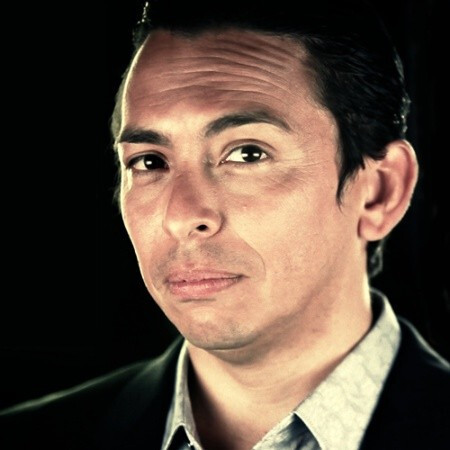
Few people can claim to have sat across from news anchor Katie Couric, basketball player Shaquille O’Neal and Smashing Pumpkins frontman Billy Corgan to quiz them about advances in technology, but Brian Solis can thanks to his popular online video series (r)evolution.
A student of anthropology, he coined the term “digital Darwinism” in a Washington Post article in 2011. Solis is also a regular international keynote speaker and the author of more than 60 research papers and eight best-selling books on digital transformation, CX, cognitive enterprise and human behavior. The one-time VP and global innovation evangelist at Salesforce has also recently started a role as global head of innovation for software firm ServiceNow.
Our pick of Brian Solis’ content:
Brian Solis on digital Darwinism and innovation
Brian Solis is a top customer experience keynote speaker. Brian Solis is a top CX keynote speaker.
The post appeared first on Brian Solis.


